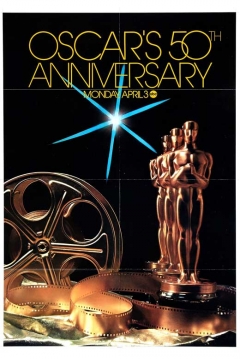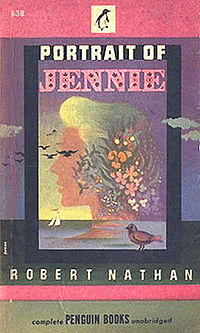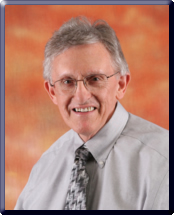Related Research Articles

The Academy of Motion Picture Arts and Sciences is a professional honorary organization in Beverly Hills, California, U.S., with the stated goal of advancing the arts and sciences of motion pictures. The Academy's corporate management and general policies are overseen by a board of governors, which includes representatives from each of the craft branches.
The Academy Honorary Award – instituted in 1950 for the 23rd Academy Awards – is given annually by the Board of Governors of the Academy of Motion Picture Arts and Sciences (AMPAS). Since 2009, it has been presented at the separate annual Governors Awards rather than at the regular Academy Awards ceremony. The Honorary Award celebrates motion picture achievements that are not covered by existing Academy Awards, although prior winners of competitive Academy Awards are not excluded from receiving the award.

The 50th Academy Awards ceremony, presented by the Academy of Motion Picture Arts and Sciences (AMPAS), honored films released in 1977 and took place on April 3, 1978, at the Dorothy Chandler Pavilion in Los Angeles. During the ceremony, AMPAS presented Academy Awards in 22 categories. The ceremony, televised in the United States by ABC, was produced by Howard W. Koch and was directed by Marty Pasetta. Actor and comedian Bob Hope hosted the show for the 19th time. He first presided over the 12th ceremony held in 1940 and had last served as a co-host of the 47th ceremony held in 1975. Five days earlier, in a ceremony held at The Beverly Hilton in Beverly Hills, California, on March 29, the Academy Scientific and Technical Awards were presented by hosts Kirk Douglas and Gregory Peck.
The Scientific and Technical Awards are three different Honorary Awards that are given by the Academy of Motion Picture Arts and Sciences (AMPAS) during the annual Academy Awards season. The Awards have been presented since the 4th Academy Awards in November 1931, to recognize original developments resulting in significant improvements in motion picture production and exhibition. The Awards are presented at a formal dinner ceremony a couple weeks before the principal Academy Awards ceremony.

Petro Vlahos was an American engineer and inventor, considered to be one of the pioneering scientific and technical innovators of the motion picture and television industries. He is remembered in particular for creating the Ultimatte process, which refined the colour process known as chroma keying. In recognition of his contributions, he was awarded multiple Oscars, as well as an Emmy Award.

Richard Edlund, ASC is an American visual effects artist and inventor. He was a founding member of Industrial Light & Magic, having already founded Pignose amplifiers, and later co-founded Boss Film Studios and DuMonde VFX. He has won four Academy Awards for Best Visual Effects, as well as two Special Achievement Awards, two Scientific and Technical Awards, and the Medal of Commendation. He is also a BAFTA and Emmy Award recipient.
The Gordon E. Sawyer Award is an Honorary Award given by the Academy of Motion Picture Arts and Sciences to "an individual in the motion picture industry whose technological contributions have brought credit to the industry." The award is named in honour of Gordon E. Sawyer, the former Sound Director at Samuel Goldwyn Studio and three-time Academy Award winner who claimed that a listing of past Academy Awards, arranged both chronologically and by category, represents a history of the development of motion pictures. It was first presented at the 54th Academy Awards, in April 1982. The Gordon E. Sawyer Award is voted upon and given by the Scientific and Technical Awards Committee of the Academy.

Academy Award is a CBS radio anthology series, which presented 30-minute adaptations of plays, novels, or films.

John Kenneth Hilliard was an American acoustical and electrical engineer who pioneered a number of important loudspeaker concepts and designs. He helped develop the practical use of recording sound for film and won an Academy Award in 1935. He designed movie theater sound systems, and he worked on radar as well as submarine detection equipment during World War II. Hilliard collaborated with James B. "Jim" Lansing in creating the long-lived Altec Voice of the Theatre speaker system. Hilliard researched high-intensity acoustics, vibration, miniaturization and long-line communications for NASA and the Air Force. Near the end of his career, he standardized noise-control criteria for home construction in California, a pattern since applied to new homes throughout the U.S.

James Graham Stewart was an American pioneer in the field of sound recording and re-recording. His career spanned more than five decades (1928–1980), during which he made substantial contributions to the evolution of the art and science of film and television sound.
John G. Frayne was a physicist and sound engineer.
The Governors Awards presentation is an annual award ceremony hosted by the Academy of Motion Picture Arts and Sciences (AMPAS), at the Grand Ballroom of the Hollywood and Highland Center, in the Hollywood district of Los Angeles, California. Three awards that signify lifetime achievement within the film industry – the Academy Honorary Award, the Jean Hersholt Humanitarian Award, and the Irving G. Thalberg Memorial Award – are presented at this ceremony. The first Governors Awards ceremony was held on November 14, 2009. Prior to this, these three awards were formally presented during the main Academy Awards ceremony, which now conducts a short mention and appearance of the awards recipients after displaying a montage of the Governors Awards presentation. In the years since, the awards have gained prominence as a major red-carpet destination and industry event.
John Morgan Eargle was an Oscar- and Grammy-winning audio engineer and a musician. He was the Chief Engineer for Delos International, author of seminal textbooks on audio, a consultant for 31 years at JBL, and past president and fellow of the Audio Engineering Society.

D. Broadus Keele Jr., also known simply as Don Keele or D. B. Keele Jr., is an American audio engineer and inventor who has helped shape and influence the professional and consumer loudspeaker industries since the early seventies. He is one of the developers of the constant directivity horn design with several patents of Bi-radial horns from companies like JBL, and Electrovoice.
Takuo Miyagishima was a Japanese-American design engineer who worked for Panavision. He was responsible for many of the company's innovations in motion picture photography and projection, and also designed the company's logo.
Edmund DiGiulio was an American technical innovator who founded Cinema Products Corporation that developed the Steadicam, CP-16, and won multiple Academy Scientific and Technical Awards as well as the Gordon E. Sawyer Award for his contributions to motion picture technology in 2001.
Don Hall is an American sound editor. He won a British Academy Film Award and was nominated for two more in the category Best Soundtrack for the films Butch Cassidy and the Sundance Kid, M*A*S*H and Patton. He also won two Primetime Emmy Awards and was nominated for three more in the category Outstanding Sound Editing for his work on the television program Voyage to the Bottom of the Sea and also the television films Tribes, Eleanor and Franklin and Standing Tall.
Bill Taylor was an American visual effects artist. He won a Primetime Emmy Award and was nominated for two more in the category Outstanding Special Visual Effects for his work on the television programs A.D. and Star Trek: The Next Generation.
References
- 1 2 3 "John A. Bonner Medal of Commendation". Academy of Motion Picture Arts and Sciences - John A. Bonner Medal of Commendation. Academy of Motion Picture Arts and Sciences. Retrieved 23 February 2015.